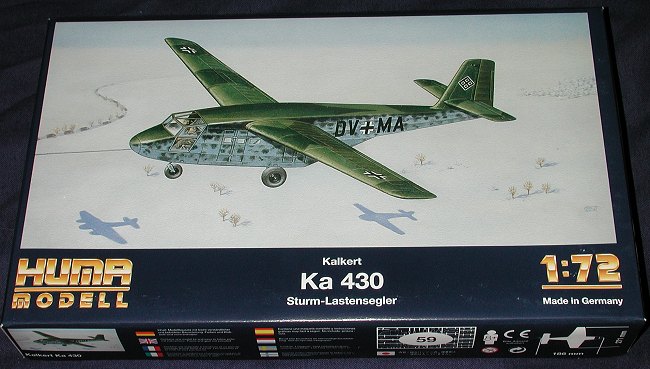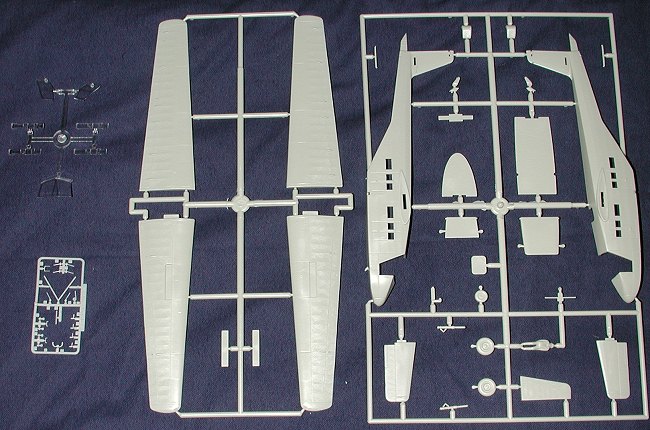
|
KIT: |
Huma 1/72 Ka-430 Assault Glider |
|
KIT # |
4501 |
|
PRICE: |
$25.98 |
|
DECALS: |
One aircraft |
|
REVIEW & |
|
|
NOTES: |

|
HISTORY |
Albert Kalkert was one of the top designers of the Gotha company and was the product designer for the very successful Gotha Go-242 twin boomed glider. These gliders were used extensively in the Eastern Front to haul supplies, troops, and small vehicles. Gotha was asked to design a glider that was between the DFS-230 and the Go-242. This glider had to be able to carry a minimum of 12 fully outfitted troops. As Kalkert was the main designer, his name was attached to the project.
The glider has features that we take for granted in today's cargo aircraft; mainly a rear loading ramp and large doors on the side. These make it much easier to load and offload troops and equipment. As with most German transport gliders, construction was mostly of wood and fabric covering with a tube steel fuselage. Undercarriage was fixed and wheeled as it was found that wheels were much more desirable to skids.
First flight was in March of 1944 and the aircraft behaved as planned with no surprises and no vices. By this time in the war, the need for the type was rapidly coming to an end. A small number of preproduction Ka-430A-0 gliders were built and flight tested. It is unknown if any were ever used operationally.
|
THE KIT |

Like all other more current Huma kits, this one is very well designed and detailed. Sprues are in their usual greenish grey plastic with finely engraved panel lines and a decent representation of fabric on the control surfaces, fuselage and sections of the wings. Also included is a sprue of finely detailed plastic bits that in Czech kits would be in etched brass.
There is basically everything you need for one aircraft. The only options offered are raised or lowered wing spoilers and the ability to position the rear loading ramp open if you wish. However there is nothing to see in the cargo section except ejector pin marks so why you'd want it lowered is beyond me unless you want to detail the area yourself. Most of the large bits have ejector pin marks. Some will be hidden when the kit is built, though some others will need filled. Those on the underside of the rear ramps and wing spoilers will be quite obvious if those items are built in the open position.
 Instructions are quite adequate showing
construction is four steps. Typical of Huma kits, no interior painting
information is given, though half of the instruction sheet is given over to a
color three view of the glider. Decals are for one aircraft, painted in RLM
70/71 upper with RLM 65 lowers. Decals are quite matte and have a box design
that you are to cut open to give you your swastika. I'll be headed for the
aftermarket sheet.
Instructions are quite adequate showing
construction is four steps. Typical of Huma kits, no interior painting
information is given, though half of the instruction sheet is given over to a
color three view of the glider. Decals are for one aircraft, painted in RLM
70/71 upper with RLM 65 lowers. Decals are quite matte and have a box design
that you are to cut open to give you your swastika. I'll be headed for the
aftermarket sheet.
Overall, it looks like another fun Huma kit and will add an additional interesting prototype aircraft to the collection.
Review kit courtesy of me and my wallet!
If you would like your product reviewed fairly and quickly by a site that has over 1,700 visits a day, please contact me or see other details in the Note to Contributors.